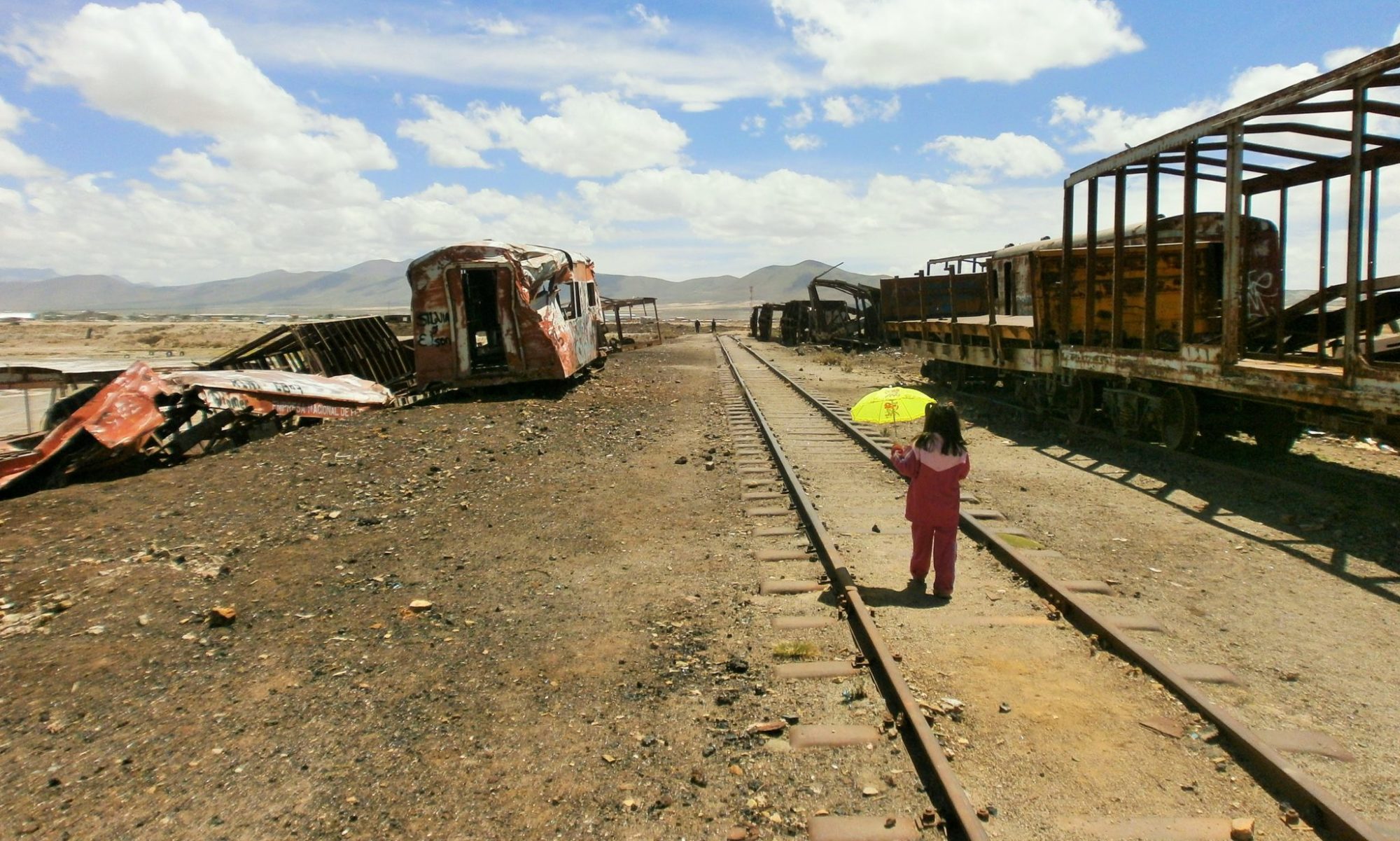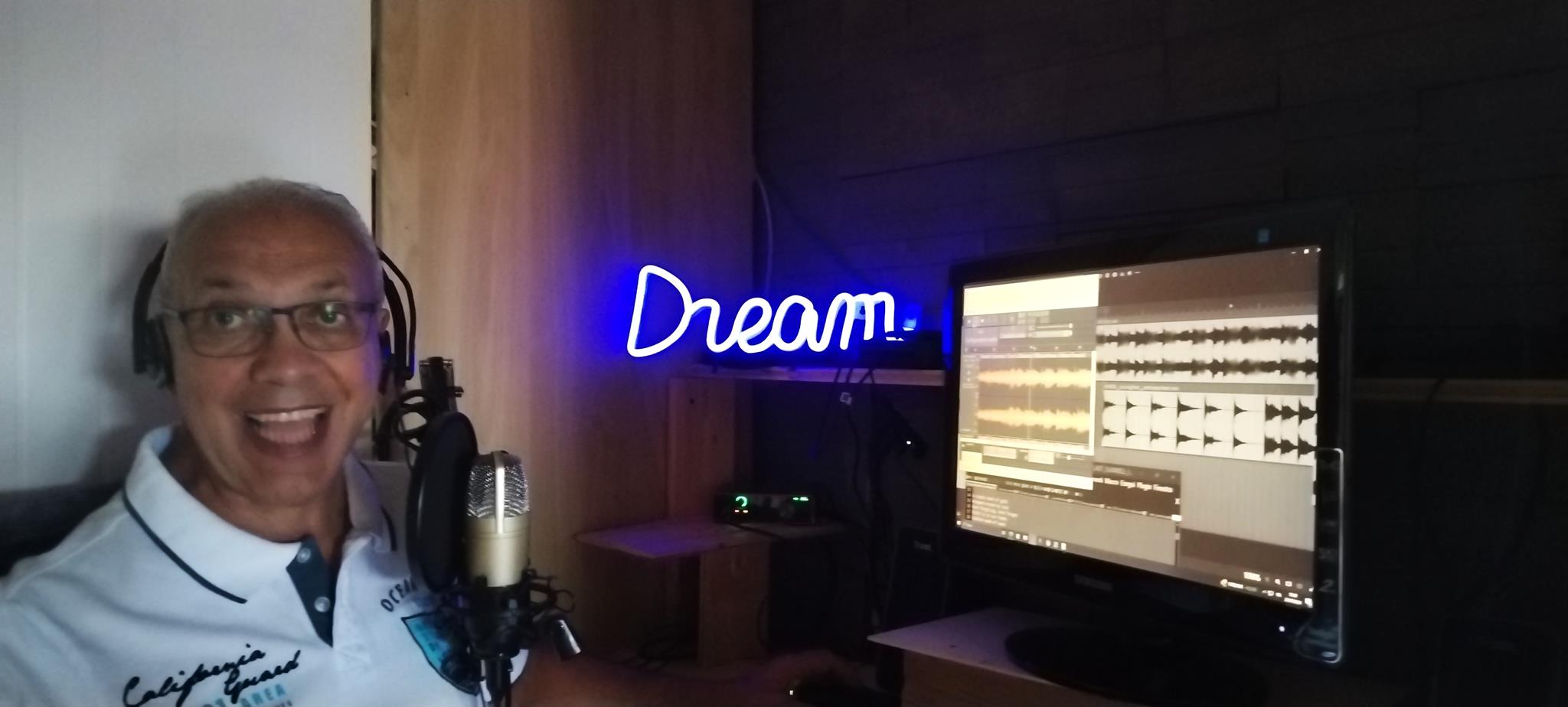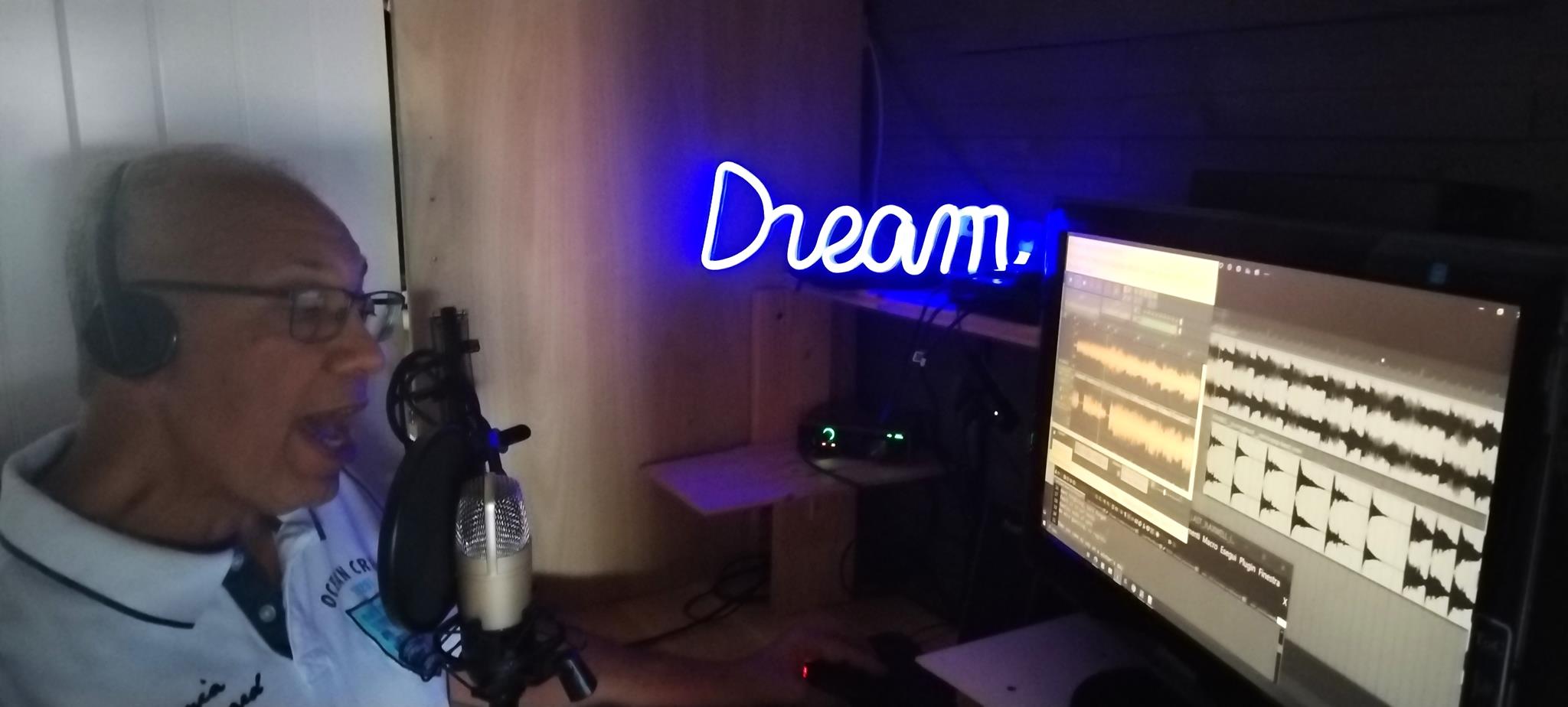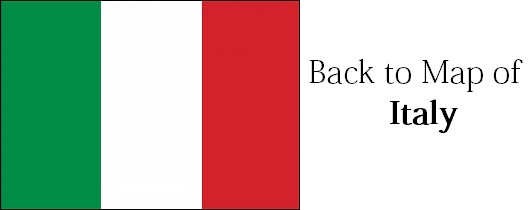The versatile creative LUIGI SAVOIA is not only a member of our Vagabundler collective and works on the Turin Urban Art Map, he also creates fantastic design objects, origami and digital artworks. He is as well a musician and singer, creates instrumental works and covers, and makes in addition interesting videos on his YouTube channel. We spoke to the artist specifically about his music in an interview. Between the text passages you will find several videos from his music project.
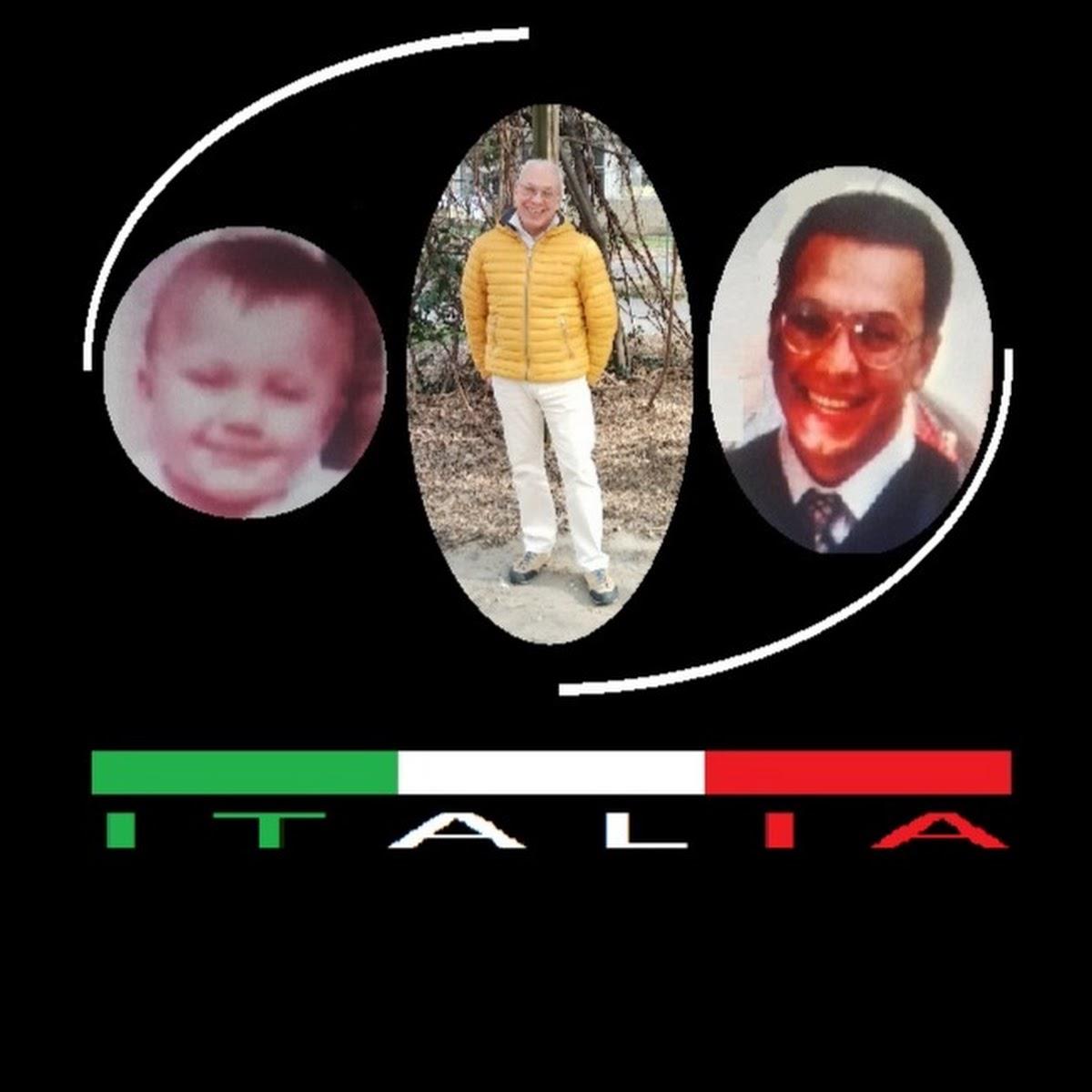
Of course at the beginning we want to know the basic questions. How did it start? When did you start singing? And maybe it’s also a second question: when did you first feel the desire to sing? Tell us more about the development of what you do.
Allow me to immediately highlight that I would like, since it is music, to accompany you with my answers towards listening to the music itself and not just talking about it. How would it be possible to understand otherwise? Only by listening to the many songs is it possible to get an idea of it. I will therefore continually report web resources for you to listen to. My first singing experience occurred during music and classical guitar courses, at the age of 23. When I approached the study of classical guitar, in the city of Turin in those years there were many virtuosos such as Alessandro Valente, Paolo Garganese (blind guitarist, 10 strings), but above all Maurizio Colonna. Here is a great video of his guitar performance at the CPM Music Institute with his song „Dance“ from „Moments live in my memory“ of the Edizioni Bèrben.
The guitar has always been a great passion and I am continually amazed by listening to the skill of virtuosos like Matteo Mancuso with his songs „You really got me“ or „Silkroad“ or Daniele Gottardo with „Cardiology„. Also my guitar teacher Maurizio Bellavia formed a choir with his many students. The repertoire was based on Monteverdi’s madrigals and on the ancient music of John Dowland. For almost two years we studied together, about 15 boys and girls and held some small concerts at associations of music and cultural centers. I have had a passion for music since I was very young, my first memories as a child were only linked to listening to the piano and of the great desire to learn to play it. There was no way to make this dream of mine come true within my family and so only in adulthood, with my first salary, did I sign up to a music school, which I attended for 5 years. I chose the guitar because I had started a few years ago as a self-taught player, playing a guitar with simple chords, acoustic, and I wanted to know how to actually play.
How do you feel when you sing and immerse yourself in the music?
It’s pure emotion! Often, I won’t deny it, when listening to music and virtuoso performers, I end up moved and crying. But above all it is physical well-being. When playing an instrument the vibrations that are produced pass through the body. The result is a massage of acoustic frequencies. In our interview as a digital artist, you will remember that one of my works allows you to listen music with your hands, precisely because I want to make those who don’t play an instrument experience this sensation. Furthermore, in singing, the breathing muscles of the diaphragm, those dedicated to vocalization, are activated. I would like to make a small clarification on the topic of physical well-being. Today I am 60 years old and at the age of 42 I discovered that I was suffering of Arnold Chiari syndrome and I underwent surgery at the Besta neurological center in Milan to carry out a cranial decompression. The presence of syringomyelia which affects the functioning of the upper limbs remains incurable. In a few words I explain that I had to abandon studying the guitar and my great desire to make music led me towards singing that I had experienced with the choir when I was young.
Tell us more about developing your singing ability over time. From when you started until now. How has applying yourself to singing improved your personal growth? Does it help you overcome the difficulties that life throws at you?
I always sang listening to music, but only during the choir period was there any serious study. Then last year, in 2023, I thought to commit seriously, and I started to register. I remember that this technique is necessary because by listening to themselves they identify themselves errors and try to eliminate them by repeating the execution over and over again. I also opened my own YouTube channel @LuigiSavoia125 to have a place in which to expose myself and thus have an „audience“ that forces you to perfection and a personal interpretation. So I’ve always been singing, but only for a year can I say that I’m doing it seriously. In personal growth and understanding of songs. Only by singing them did I really feel them. Furthermore, in looking for songs to sing I discover a lot of music from past years that I had missed, and a lot of new music that I wouldn’t have found otherwise. Continuing to talk about Arnol Chiari syndrome, singing makes me breathe better, activates muscles that I wouldn’t use otherwise, and the general sense of satisfaction in hearing that the piece I am studying takes shape and has its own dimension, it causes waves of well-being. I truly believe that making music, as well as listening to it, is a real medicine for many people who suffer from some pathology or syndrome.
You are applying yourself and studying to reach ever higher levels. Is it facilitated in some way by your natural inclination? And was it easier with the other arts? We remind those who read us that you are also a digital artist. Do you sometimes wonder why you didn’t choose theatre, dance or other performance art?
I believe that natural inclination is the basis of everything. Since I was little I was never interested in the sport of football, I chose cycling as a sport, and I never thought about smoking. I gave two examples where most people are inclined to apply themselves. In my case, that „feeling inside“ the music led me towards becoming a performer. This „feeling inside“ also happens to me with art. I drew a long self-taught in pencil and ink, I study modular origami with which I have had several exhibitions. I experiment with mathematical sculptures, using techniques you learn in my working profession. I explain this artistic investigation of mine in detail in the article you cited. I experimented with theater during my adolescence, with small performances in a parish environment, but music prevailed. For dance, however, I don’t have any physical component that allows me to do it and I haven’t felt the call, to answer precisely, but in general, my choices have an emotional and non-imitative source.
From what you just said, we recognize a common matrix that links the different themes you are tackling: music, mathematics, geometry, art. Do you think the ways you are applying yourself are sufficient or could there be further developments?
As you know and I haven’t mentioned it yet, I am passionate about urban art and right with you I am involved in the VAGABUNDLER PROJECT as a popularizer of how much I can discover starting from the places I live here in Turin and its surroundings. I can’t foresee new themes where my „feel inside“ will attract me. But I can say that I experience the same emotions in an embryonic way when I discover films or books that deal with particular themes. To give an example, the last film I saw that made me cry was „Genius“ directed by Michael Grandage in 2016 and based on the written biography „Max Perkins: Editor of Genius“ from A. Scott Berg. „New York, late 1920s. Max Perkins is the main editor of the Scribner’s Son publishing house and has already made his contribution to discovery of writers of the caliber of Francis Scott Fitzgerald and Ernest Hemingway. On January 2nd in 1929 he had his first meeting with Thomas Wolfe, who presented him with a thousand-page manuscript entitled „O Lost“. Perkins read it in one sitting and is certain of have before you an author who deserves literary success. He finds himself faced with a man who needs support and has a difficult character.“ Michael Grandage’s film differs significantly from classic biopics. I made the discovery of that great film and at the same time also of the splendid books written by Thomas Wolfe. Thomas Clayton Wolfe is not to be confused with Thomas Kennerly Wolfe Jr., known as Tom, author of „The Bonfire of the Vanities“ of which a film was made in 1990 directed by Brian de Palma and starring Tom Hanks, Bruce Willis, Melanie Griffith and Morgan Freeman. Thomas Clayton Wolfe wrote „Angel, Look at the Past“, „A Story of the Buried Life“ or „Of Time and the River From Death to Morning“.
What is singing for you? What is your concept, how would you explain it? Also, how would you place it with your everyday life? If you don’t sing for a long time, do you feel like you’re missing something?
I was able to experience with my senses what happens to a singer. It’s not just a question of voice sounds. The entirety of your being is of it involved. You notice that different voices come from you than the ones you use, your ears perceive vibrations coming from inside. I have the perception that areas of the brain are activated that I normally don’t use. Like an athlete who awakens muscles that do not he thought he might have. So singing is a further space where I investigate my being and my very existence. Singing allows me to expand my life understanding of myself and the identification of my talents. Since I started singing seriously a year ago, I have sung at least two hours a day. The days that I can’t sing due to the commitments that life requires me to fulfill, I feel like I’ve lost something.
It seems that it is therefore not just a matter of music and what is listened to physically, but actual perceptions. Can you explain that more in detail?
I can only try because I’m not trained in this, I haven’t applied myself to specific studies. I can tell you what I experienced directly. In the context of my Arnold Chiari syndrome, among many therapies, I also followed hypnosis sessions where I learned by putting basically, the ability that each of us has to activate that state in which you are not awake but you are not even sleeping. I felt what it means and the brain begins to visualize images and make you feel different sensations. You awaken from this state with new energies and levels of concentration. Using the part of the brain that is creative, with art, modular origami, music, is for me a continuation of the half-asleep state.
Let’s talk more about your need to sing. Are there or have there been any strong motivations?
I responded in part by saying that I approached singing when I was young with the choir and recently as a mature age. I think it was just the age for me the renewal of the desire to sing, in addition to the fact that I can no longer play the guitar due to damage to my upper limbs due to Arnol Chiari syndrome. The need arises from the desire to make music and not just listen to it. Singing allows me all this.
It seems from what you say that you feel that as you get older you feel like you’re running out of time. Do you think this analysis is correct?
Yes, correct. Each of us thinks death is distant until you suddenly reach an age or physical condition and begin to question yourself about how much you have done and how much more you would like to do. Understanding music better remains one of the things still to be done and I feel that in it together with many topics that I follow hide information that, if understood better, allows one to broaden one’s identification.
So singing is part of what is still missing. Are there other things that are incomplete?
Yes, many, I would like to broaden my artistic path, create a laboratory and organize exhibitions and events throughout Europe. I would also like a small one recording studio for my covers with targeted equipment. Modular origami has continued to evolve in recent years and there are hundreds of new models that I have never made. In the past I have organized exhibitions and I would like to integrate those of my digital works with these models.
Tell us a little about your equipment. There are some typical singer things that are easy to imagine, like a microphone. But are there any „behind the scenes“ details?
Excellent question. I chose not only to sing but to push myself into creating videos to publish on YouTube. So it is important to have a very high quality of the final result respecting those who want to view my videos. You must have a good initial audio track, e.g to do this I have a good quality microphone and a dedicated sound card external to my PC. I then use an audio editor like Audacity or Beper to improve the quality of the sound by inserting effects such as reverbs and filter frequencies that determine the type of resulting sound. During recording I listen to the original track on headphones and sing at the same time as the singer. Once you have the audio track with instrumental base and my voice, I create an audio file that I can replace the original videos, using a video editor like Avidemux. The use of online programs and services that are able to separate the musical tracks from the vocal tracks from each audio is also fundamental. In this way you can listen to the singer without the music, to better learn the notes to sing. Finally, I remove the singer’s voice and I leave mine recorded together with the instrumental backing track.
From what you describe it seems like a very complex process. How did you figure out how to do it?
The method I use is to break the problem down into small parts, and find the solution using the many resources on the web. There were many obstacles to overcome. First of all, everyone has their own vocal range and you have to find the correct pitch. One of the first operations in the audio editor is to change the pitch. However, compromises must be found, if you change too much you get it a backing track that becomes too shrill or distorted downwards. Sometimes I edit so that I can sing with an octave difference and my voice is thus within my range. Then comes the ability to use one’s voice in a natural way, without the temptation to imitate the singer and taking away one’s own accent, taking care of diction. Improve muscles and breathing (this is why singing makes you feel physically good). I just started use my voice in unnatural areas, such as falsetto and laryngeal sounds. The original language of the song is another obstacle, but stubbornly if a music/song attracts me I try to sing it anyway. Using you can discover the playlists of my YouTube channel and select the languages sung up to now. I made songs in differentl languages or dialects, like Calabrian, Italian, French, English, German, Swahili, Aramaic or even non-existent languages. Finally, when publishing on YouTube there are conflicts with the authors‘ copyright and to avoid violating it I use a little trick: you can use free videos, where I replace the audio with the one I produced. Thus a further game is born, it is find a video that also graphically expresses what the lyrics of the song say. Many songs are composed of many voices and in order to hear them there are many good singers who explain the various harmonizations. Thanks to them I was able to sing songs like Queen, Abba or Chicago.
As in all other artistic genres or even in sports, there are certainly various competitions and prizes in singing too, right? Have you ever taken part in an event like this or are you planning to? Is there an event you would really like to attend? Is it a dream to participate there?
I choose to perform but without competition, prizes or big events. On some small occasions I have sung in front of a small audience, just one song at a time. I would like to organize small shows where I can screen the various films I have produced while singing live. The real purpose it’s about creating fun moments to share with many people and creating happy emotions. I would also like to try using some of these moments to raise public awareness on some important topics. As I was saying about myself, I am subject to Arnold Chiari syndrome. For some years at the rare disease center where I do my regular training checks, I collaborate as a volunteer and fundraiser. It would be nice to use my singing for fundraising evenings. I recently went testimonial during the rare disease day meeting and I spoke with a text of mine which I read to all the many people present.
I suggest you read it below: „I woke up at dawn on June 6th in 2005. My mind made me escape from what I would soon have to face, and as in the previous days I was thinking that, exactly 61 years earlier, on 6th June in 1944, the Normandy landings took place. I was preparing to face my personal landing. In the previous months I had experienced all the symptoms that medical texts describe under the heading „Arnold Chiari“. The age at which these symptoms manifested also coincided, 42 years. Severe headaches, which often occur after coughing, sneezing and excessive straining. Neck and face pain. Balance problems. Frequent dizziness. But above all a very loud ringing in my left ear, of the intensity of a plane taking off, which had lasted for a week and which had me sleep and the ability to order thoughts are taken away. I remember starting to spin like a crazy top around all the doctors who they could help me. At the time I was living in Bergamo for work reasons, I spoke for a long time with the attending doctor, Dr. Paola Pini. This doctor he was extraordinary, he showed me a correct medical investigation path: magnetic resonance imaging at a center in Zingonia, San Marco, where an expert radiologist recognized Arnold Chiari syndrome. How many coincidences in this experience, in addition to the aforementioned historical date. I am in Bergamo exactly at the moment in which the explosion of symptoms occurs, and Dr. Pini personally knows the head doctor Prof. Giombini of the Besta Neurological Institute in Milan. At the end of April 2005 I was visited by the Professor, he studied my medical records full of CT scans and MRIs and scheduled the operation at the Institute. He explained to me in a simple way what the operation consisted of. „You think about how the trousers expand, a patch is inserted on the back of the waist belt“. I then looked in the dedicated texts and for this type of intervention we read: craniocervical decompression which aims to widen the „posterior fossa“ and recreate the interrupted or reduced passage of cerebrospinal fluid, relieve pressure on nervous structures, stop the progression of the disease and decrease the severity of symptoms. The decompression intervention can be carried out with different variations. Generally, a distinction is made between decompression „with or without opening of the dura mater“, which is the outermost membrane that surrounds the brain. In both variants, a small part of the posterior cranial theca is opened, at the bottom (craniectomy) and, often, a part of the first or first two cervical vertebrae (laminectomy). At this point, the majority of neurosurgeons, based on their experiences, decide to open the „hard“ to widen the space, closing it with the application of a „patch“. Among the variants of the operation, in addition to the opening of the dura, there are: the size of the opening of the skull bone; the material to be used for the „piece“. At the time I immediately thought while listening to the professor. Giombini: many risks, it opens up a brain, each patient has his own way. What damage could occur during the operation? But did I have a choice? Could I avoid it, postpone it? No, I couldn’t, impossible to live and live with those symptoms. There was no sleep, there were no linear thoughts, it was not possible to do anything. Strange right? You have legs, arms, sight, hearing, voice, strong heart, muscles, but you can’t use them. So I accepted the surgery. The day arrived, on June 6th at 6 in the morning I drove from Bergamo where I lived at the time, towards Milan. With me my wife and my sister.
I arrived at Besta at 8, the time to check in and in a very short time I found myself naked on a stretcher, an energetic and kind nurse who she pushes it, corridor, elevator, operating room, anesthesia. Smell of liquorice… I wake up after 6pm, I have cannulas inserted in my arms and right ankle, the catheter. Strong jasmine smell. This perfume accompanied me all night. Now I’ll tell you a fact that I haven’t yet deciphered, with details that have been enriched in time. The evening before the surgery I dreamed of a child dressed in white who came to greet me. Never happened before, nor will it happen after. The morning after the operation, after a night of pain alleviated by painkillers, a nun in a white dress comes to me and tells me „Please, when you go to the seaside, cover the wound because it shouldn’t sunbathe.“ Nothing else, she leaves as quickly as she arrived. She doesn’t go to my neighbor’s house. Years later I spoke to a volunteer from Cottolengo to whom I told me this fact and he said to me „strange, my dad is a doctor in Milan, I know the structures well, I don’t know that there are any nuns at Besta who do visits or volunteer or assistance…“ The smell of jasmine is always with me, they say it is the smell of reminiscence, does the cerebellum send messages? Both Professor Giombini and the neurosurgeon who operated on me. Dr. Todaro comes to visit me. They tell me about an operation complex, a lot of bone removed, open dura mater, biological prosthesis, L1 laminectomy. My head hangs, it doesn’t stay up on its own, they discharge me in the evening, a friend picks me up and takes me home. Long convalescence, numb muscles, the catheter has scratched, every time it feels like urinating with blades, sounds of water in the head, I’m afraid to move. Maybe everything tears? This feeling of fragility still accompanies me today, I think my neck might break. Instead it holds up well, even to subsequent events such as carpal tunnel operation on the left hand which I use clumsily (the upper right part has atrophied muscles due to the syringomyelia which occurs extends from C1 to C7), operation with general anesthesia for prolapse but without liquorice or jasmine smells this time. In 2013 a fall on the subway staircase with 6 stitches in the forehead, in 2019 a road accident with a boy who doesn’t respect the red light and causes me 7 broken ribs on the left side. Unlucky boy, what bad luck indeed! Someone must be thinking of me. But despite everything, I believe on the contrary, that thanks to many people I have always been lucky enough to get back on my feet. With their help, their heart, their skills. On the occasion of the fall on the subway stairs, a boy next to me, a Red Cross volunteer, stops to assist me he calls and waits for the ambulance. I then found out in which center he volunteered, I spoke to the manager service speaking well of him, I offered a small donation. I met the CRESSC – Regional Expert Center for Syringomyelia and Chiari Syndrome around 2014. In the complexity of my events there exists also the possibility of finding help and having luck. This center exists right in my city, so I make an appointment with it Dr. Ciaramitaro to make me known and welcome among the patients under her control. Since then I have been regularly monitored and monitored and my data from magnetic resonance imaging, evoked potentials, neurological examinations in general are used to enrich research in this field. After the accident she checked me with great patience and timely for any consequences, but found none. This center is of great importance for all people who need to start medical investigations, taking advantage of the multidisciplinarity set up with great attention, or who have to decide to face a path like mine. Precisely in this location I spent a lot of time before Covid for recovery and functional maintenance activities. It was very useful to me, they taught me to reprogram my movements and create mental images that strengthen hidden energies. Before Covid, and I hope we can resume soon, I actively participated in the fundraising days for the center. I accepted this testimony because I want to reciprocate the much good received, to thank all the doctors who allowed me to be alive, and to continue to have a dignified life, even today that I am 58 years old. A big thank you to all the doctors, to all the organizational functions and support, to the nurses and specialists, a big thank you to Dr. Ciaramitaro. Thank you all for listening. I end here. Happy Rare Disease Day to all of us.
You do probably learn from other singers and get to know many skills. How do you develop what you learn from them?
Correct. I follow many good singers who explain how to use their voice and the exercises to correctly produce the many types of sounds and notes. I do the exercises they suggest. I can say that since I started, about a year ago at the beginning of 2023, to today, I notice an improvement. Both in terms of breathing and of holding the notes without the effect that is called „flashing note“ and I achieve clearly higher notes. I’m also getting better at using falsetto, which is easy to produce ridiculously if you don’t use your muscles correctly to seamlessly switch from the normal voice.
What would you say to other people who want to become singers? What would you like to say to those who love singing and music and want practice it alone?
Try. Repeat. Listen. Record and listen back. Don’t feel ashamed and don’t think you’re out of tune. When I signed up for the first time I learned, by listening to myself again, that I had to make a lot of improvements. I continually work to improve my voice and intonation. Being able to sing and make music is a completely different and more emotional experience than just listening. Often, the first time I sing a song and I’m moved to tears. When I get the final recording, complete with effects and audio cleanup, I listen to it again and I often cry again, especially because I listen to it again with my wife, who gets emotional with me. Intense experiences. Sing. Sing. Sing.
INFOTHEK
![]() Singer, Designer & Urban Art Photographer: LUIGI SAVOIA
Singer, Designer & Urban Art Photographer: LUIGI SAVOIA
![]() Youtube: https://www.youtube.com/@luigisavoia125
Youtube: https://www.youtube.com/@luigisavoia125
![]() Streetart: https://www.instagram.com/mcescherbach
Streetart: https://www.instagram.com/mcescherbach
![]() Design: https://www.instagram.com/mcescherbach_design
Design: https://www.instagram.com/mcescherbach_design
![]() Main Legend: https://www.instagram.com/explore/tags/mcebmainlegend
Main Legend: https://www.instagram.com/explore/tags/mcebmainlegend
![]() Interview about Design: https://vagabundler.com/designer/luigi-savoia
Interview about Design: https://vagabundler.com/designer/luigi-savoia
![]() Streetart Map Turin: https://vagabundler.com/italy/streetart-map-turin
Streetart Map Turin: https://vagabundler.com/italy/streetart-map-turin
MORE ARTICLES ABOUT ITALY
>>> Streetart Map Turin <<<
>>> Nick Neim & Art of Sool <<<
>>> Urban Artist Mrfijodor <<<
>>> Designer Luigi Savoia <<<
>>> Murales di Orgosolo <<<
>>> Exhibition: Abracadabra <<<
>>> Venice – Venezia la Serenissima <<<
>>> Torino Cittá del Cinema <<<
>>> Exhibition: Streetart in Blu 3 <<<
>>> The Chamber @ Graphic Days <<<
>>> Exhibition: Photocall <<<
>>> Musei Reali – Martha Cooper <<<
>>> Florence – Firenze Toskana <<<
>>> Lago di Como <<<
>>> Bologna – University City <<<
>>> Streetart Bologna <<<
>>> Lago di Garda <<<
